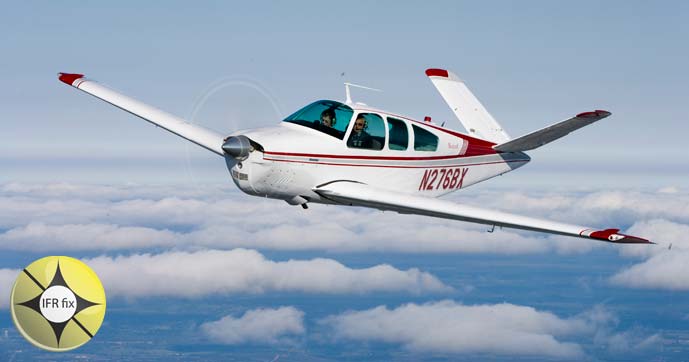
You have an instrument rating, and now, a distant destination. Time to book your old IFR trainer for a new kind of outing.
Wait—here’s a better idea. It’s time to start flying aircraft designed with long-distance travel in mind.
Instructors know that a good trainer should make a pilot’s life (a little) difficult. “Forgiving” is a frequently applied description for aircraft handling, but in a trainer, the words “a little too—” often come first. Many trainers and basic aircraft are slow and only moderately stable around the axes. Not a perfect prescription for a day-long trip to the beach with passengers.
Trainers typically feature low wing loading that lets you experience the educational benefits of bouncy air during sessions practicing multiple approaches. Their limited fuel capacity and cruise airspeeds challenge your cross-country planning skills.
Lower service ceilings squeeze your planning vertically, and oh, how the vibration of a fixed-pitch propeller transmits itself directly to your spine after hours aloft in cloud. And the longer a trip lasts, the more likely a weather surprise.
Say farewell to all that austerity when you climb into a complex or high-performance machine for the checkout required before you can fly it as pilot in command.
This is a cruising machine—and your checkout should sample that realm. Perfunctory flights in the practice area and the pattern don’t showcase what the airplane’s really got.
What has it got?
From 20 to 50 extra knots for cruise, or more. Trim control in two or three axes for your hand-flying pleasure. The fatigue-fighting smoothness of a constant-speed propeller; if that doesn’t strike you as a serious plus, it will by the time you land.
Higher wing loading produces the rock-solid ride common to high-performance aircraft. Compare a Cessna 172 and a Cessna 182. They have the same 174-square-foot wing area, but each square foot of the Skylane wing supports 33 percent more weight.
Wider altitude envelopes, and almost countless power-rpm combos give high-performance or complex aircraft flexibility to deliver speed with economy.
Best for last: “High performance” doesn’t mean “difficult to fly.” Power, responsiveness, and stability can create finger-tip handling, reducing your workload on hectic departures or tricky approaches.
If that sounds like a dream come true, your old trainer will forgive you—even if it never has before.



